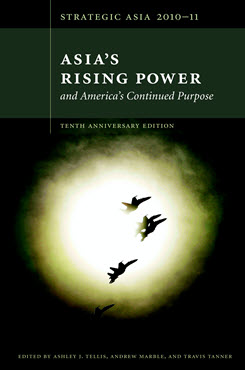The Geopolitics of Strategic Asia, 2000-2020
This chapter examines a range of possible geopolitical futures for Strategic Asia and evaluates the likelihood of each outcome based on the prospective performances of the U.S. and Chinese economies, potential political reform in China, and other factors.
EXECUTIVE SUMMARY
This chapter examines a range of possible geopolitical futures for Strategic Asia and evaluates the likelihood of each outcome based on the prospective performances of the U.S. and Chinese economies, potential political reform in China, and other factors.
MAIN ARGUMENT
No student of geopolitics should be surprised by the conclusion that the future shape of Strategic Asia will be determined in large part by the power and preferences of its two biggest players. If China’s economy falters, the U.S. will remain dominant in at least the eastern portion of this vast domain. If the U.S. stumbles, on the other hand, the chances of Chinese hegemony will grow. If both powers remain strong and engaged, Strategic Asia will likely be split along geographic and ideological lines.
The probability of other scenarios will depend on factors that lie outside the realm of normal geopolitical calculation. It is much easier to imagine the U.S. and China collaborating to keep order in Asia if they share the same democratic values and institutions. Similarly, an East Asian community modeled on the European Union is more likely if China liberalizes than if it does not.
POLICY IMPLICATIONS
- The geostrategic future of Asia will depend on whether China continues to rise, whether the U.S. retains the economic resources and political will to stay engaged in the region, and on the choices and preferences of the two powers.
- Current trends suggest that Chinese hegemony or the division of the region into continental and maritime spheres of influence is most likely.
- Given the unlikelihood that China will undergo significant political reform in the near future, the U.S. must craft its regional strategy without counting on a liberal regional partner.
Strategic Asia
The Strategic Asia annual edited volume incorporates assessments of economic, political, and military trends and focuses on the strategies that drive policy in the region. Learn more about Strategic Asia.


